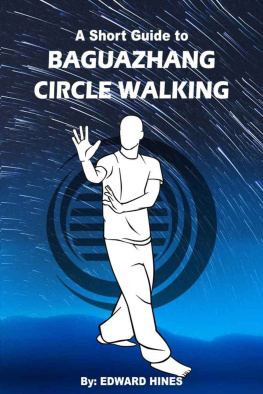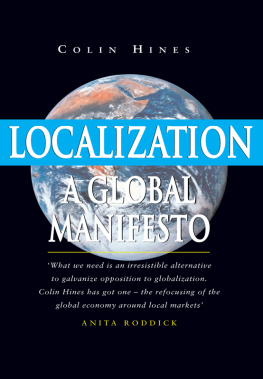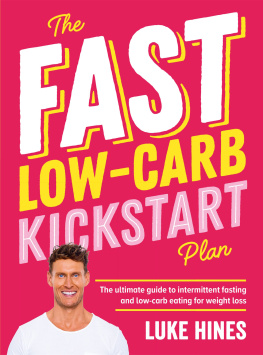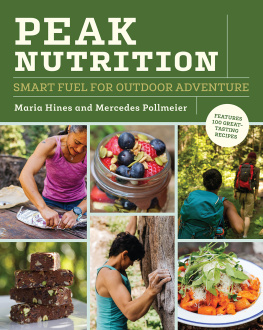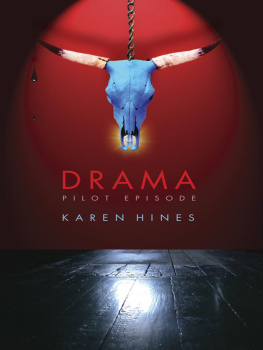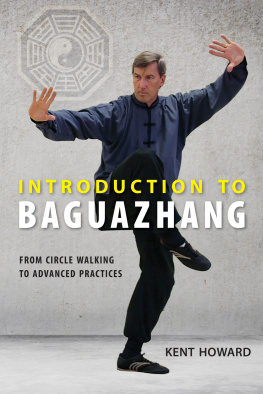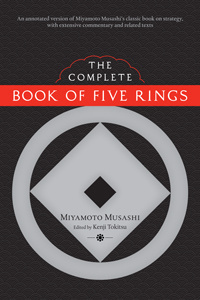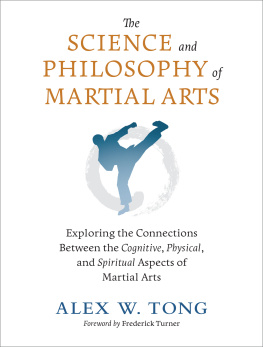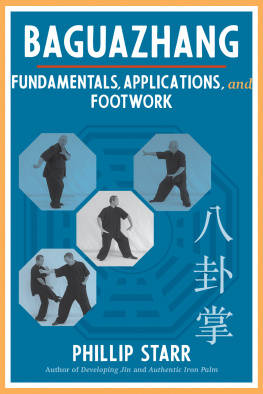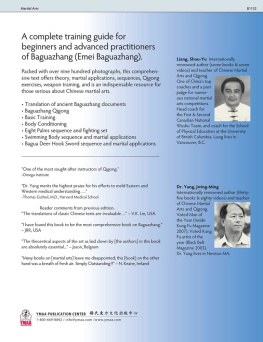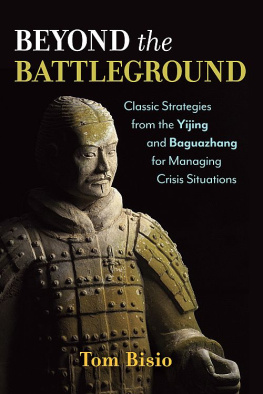A short guide to
Bagua circle walking
by Edward Hines
Copyright 2015 Edward Hines
ISBN 1519250312

Disclaimer
I have included the following paragraphs as a sad necessity of our times, to which I reluctantly bow. Responsibility for your own actions should be a given.
The techniques, ideas, and suggestions in this book are not intended as a substitute for proper medical advice. Martial arts and other forms of exercise can be dangerous, especially if performed without proper pre-exercise evaluation, competent instruction and personal supervision from a qualified fitness professional.
Always consult your physician or health care professional before performing any new exercise, exercise technique or beginning any new dietparticularly if you are pregnant, nursing, elderly, or if you have any chronic or recurring conditions.
Any application of the techniques, ideas, and suggestions in this document is at the readers sole discretion and risk.
The editors, authors and publishers of this book are not liable or responsible to any person or entity for any errors contained in this book, or for any special, incidental, or consequential damage caused or alleged to be caused directly or indirectly by the information contained within.
Dedication
To Alan, who knew the meaning of dedication.
Other books by Edward Hines
Beginning Bagua
Moving into Stillness
Coming soon:
Single palm chang e a guide to Baguazhangs key movement
The book of Baguazhang basic s big, beautiful and bulshi t free
The applied circles of Baguazhang
Table of Contents
Introduction 1
About circle walking 3
The structure of this book 7
The challenge of Chinese martial arts books 8
What you will not find in this book 11
Body use in circle walking 14
Breath 16
The head 19
The torso 22
The hips 27
The knees 29
The feet 30
The arms 35
Stepping methods 39
Single Palm Change 53
Ways to practice 65
Conclusion: Walking in a vacuum 74
About the author 76
Website 78
Glossary of Chinese 79
Links 82
Other books by Edward Hines 83
Introduction
Circle walking has been a part of my life since I first met Luo Dexiu in Taiwan over 24 years ago. Circle walking has been a riddle, a comfort, a source of strength, of calm, a burden, a joy and many other things. I cannot say that I have never missed a day in that time. Ive missed quite a lot of days. But Ive always come back, and there has always been more waiting for me.
When I started Baguazhang there was little written or video material available on the subject. Much of it was misleading one way or another, too mystical, too vague, too promotional. These days there is a lot more information readily available.
However more is not always good. Yes Im fully aware of the irony of me adding to that more. I want to write a short and practical book a little in the spirit of a sanda classmate of mine who said of the Taiji classics People read all kinds of mystical stuff into the Taiji classics, I prefer to think of them more as a manual, like a manual for driving a car.
In this book I use the words Bagua and Baguazhang interchangeably. I realise that without context this is not entirely correct, however it matches my spoken usage and has not caused confusion as far as I know.
About circle walking
Circle walking is the core practice of Baguazhang . It is not the only practice, and you cannot get everything from it as some teachers might suggest. However since it is really key to so many aspects of Baguazhang its a good idea to be clear about how to practise.
What makes Baguazhang special, in relation to many preceding Asian martial arts is that it is based on natural human locomotion. Most Asian martial arts put a lot of emphasis on fixed stances, bu , though experienced martial artists understand that it is the transition into the stance that gives the stance function (and the Chinese character for step and stance are the same).
In Baguazhang the emphasis is much more in the transitions than the fixed shapes.
Everyone knows how to walk, right? Well more or less, and Baguazhang goes deeply into the conscious exploration of walking to develop valued qualities.
What circle walking can do for you:
- Provide a centering, calming, refreshing moving meditation
- Improve body awareness, posture, balance and agility
- Strengthen your legs, aspects of mobility and improve your balance
- Develop your martial power
- Explore strategic and tactical movement
- Create a sense of ownership of the space around the body
What makes circle walking so appealing once you have developed it as a skill is the feeling of flow, the ability to remain increasingly stable in motion, to be both solid and sensitive, of being simultaneously unstoppable and able to change fluidly.
Another important aspect of circle walking as exercise is that it combines what are often contradictory element s calmness and activity. For the body to maximise its natural healing abilities it needs to be calm. Another important component of healing you is circulation of blood and lymph, and these circulations are stimulated by the act of walking.
Of course this takes practise, and it can be a demanding practise. Circle walking requires mobility through the joints of the legs, strength, balance and control. Fortunately it also develops these qualities.
While it may be useful for many people to do some prior work before beginning to circle walk, the approach I want offer here is starting easy, and gradually adding in difficulty.
What circle walking includes
- Weight transfer, weight transfer, weight transfer
- Circle walking is moving in a straight line (ok a curved one)
- Circle walking is changing directions
- Circle walking is kicking, trapping and throwing
A useful l rule to remember when you practise is that you can't do it all at once, at least to start.
Practice is the gradual layering in of different qualities and abilities. To start with pick a single quality or ability and focus on it, until it becomes largely automatic.
Practice can be more than just the development of physical skills and qualities. You might ask how can it not be more?
When you start to circle walk, you are training mental or emotional qualities in a very real way. You are also tracing a shape that is held in reverence by many traditions the world over, a shape that has metaphoric as well as geometric qualities.
How and whether you choose to engage with these other meanings of circle walking is a personal choice. The emphasis in this book is as concretely on the physical, though that does not mean that is all there is.
Pay more attention to quality than volume of practice. The quality of your practice is determined by your ability to focus on what matters.
Knowing what matters is a different challenge. It is usually the role of the teacher to help you find the most useful focus, and there is no real replacement to a live teacher. Still I will do my best in this book to help you determine what you need to focus on.
The structure of this book
This book has a number of distinct sections. Many of these refer to Gao Yishengs writings on Baguazhang .
The first describes the general body requirements of circle walking, from head to toe, from inside to outside.
The next section illustrates the most important hand and body positions that you can use for circle walking.
The third section outlines different ways to structure your practice. It includes a logical order of development, images and partner exercises.
Next page
